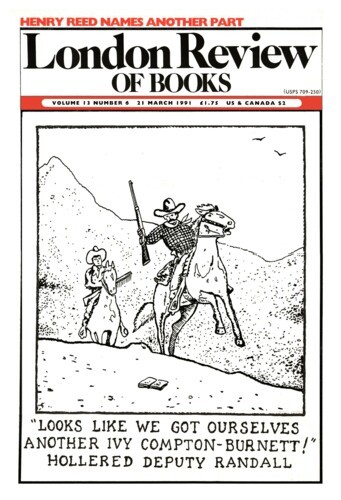It seems that the likes of Edward Larocque Tinker, Robert P. Swierenga and Colonel John S. ‘Rip’ Ford have all made valuable contributions to our knowledge of the cowboy world, and Richard Slatta’s Cowboys of the Americas* sets out to illuminate the structures and processes behind the historical underpinning behind those who wear spurs. On reaching page 219 of this fascinating tome, the reviewer smoothed down a crease in his chaps and came upon the following lines: ‘We have ridden a long way with the cowboys of the Americas. What have we learned about them, collectively, and as distinctive social groups?’ At this precise moment the diminutive, bewhiskered figure of Gabby Hayes burst into the room wagging a dusty finger and spluttering: ‘You just hold it one durn tootin’ minute, young feller!’ One can indeed sympathise with the grizzled little chap, for it was he whose sudden bursts of insight helped to enliven many a sagebrush saga as they flickered across the screens of a post-war England. The joy of this particular book, however, lies not so much in its predomination of socio-historical scholarship, as in the minutiae of cowboy life.
In South America, the vaqueros evolved the technique of wrapping their lariats around the horns of their saddles. Anglo cowboys quickly adopted this method of ropework and corrupted the Spanish term to describe this process, dar la vuelta, into ‘dally welter’. When these same vaqueros sailed to Hawaii in the 1830s the Hawaiian cowboy (paniolo) became a ‘dally man’. The text progresses through the evolution of the livestock industry, the Amerindian experience, and discussion of the pre-eminence of the Hispanic heritage, before sneaking in what must surely be the most sublime sentence in the book: ‘Clyde “Kindy” Sproat, a cowboy from North Kohala, explained the rationale for dally roping.’
In this post-Perelman world of ours it has become impossible to confront such a spectacular configuration of words without dissolving into a state bordering on delirium. But there are richer seams yet to be mined. A chapter devoted to the saddle is extraordinarily illuminating. What were the sinister forces that gave rise to the appearance of the seemingly innocent-sounding ‘Mother Hubbard’ saddle design in the late 1860s? Something must have alerted Jim Redfern to the fact that things were not quite what they seemed, for why else would he have undertaken the arduous trail drive from Oregon to Wyoming in 1885? His notebooks reveal: ‘All but one of the saddles I noticed were rim-fire rigs, that is having both front and rear cinches, as is true of Texas, Montana and Wyoming rigs.’ Clearly this prairie precursor of Nicholson Baker had stumbled onto something here: the hidden agenda, evolution and variation in Western Stock Saddles.
Following a brief survey of cantles and wedge-shape prolongations, the author eventually comes to grips with a subject that has serious implications for us all: the place of yodelling in Western society. After Hawaiian cowboys had been introduced to the delights of the dally welter, it appears that they sought to redress the balance by exporting the Hawaiian yodel to the Americas. When yodelling was added to the slack-key guitar style – which involved playing the instrument on the lap with a knife or bottleneck – the foundations of the classic Country and Western steel guitar sound were laid. Jimmie Rodgers recorded ‘Last Blue Yodel’ way back in 1930. Unfortunately he went on to record many more examples, including ‘Blue Yodel No 1’ and ‘Blue Yodel No 9’. Other songs of his were cunningly titled ‘The Brakeman’s Blues’ and ‘Mule Skinner Blues’, but it soon became apparent that in reality these ditties were ‘Yodelling the Blues Away’ and ‘Blue Yodel No 8’ respectively. To compound matters further, the otherwise enchanting Good sisters, Millie and Dolly, entered the recording studios, and as the immortal duo ‘Girls of the Golden West’ committed to shellac the burning question of the day: ‘Will there be yodelling in Heaven?’
After the complexities of equestrian subcultures and the radical changes brought about by urbanisation, it comes as a light relief to be introduced to the ways of the cowboy at play. An insight into gaucho merrymaking appears under the heading pechando. Two gauchos face each other on horseback at a distance of 220 yards, presumably after much experimentation with trial distances of 200 and 240 yards. At a given signal the gallant lads gallop at top speed toward one another. They crash head on, tumble to the ground, remount and charge again. The contest continues until the proceedings are halted by exhaustion, serious injury or death. It is only to be hoped that the many convalescent homes dotted across the sagebrush were supplied with phonographs, together with ample stock of the recorded oeuvre of the sisters Good.
Send Letters To:
The Editor
London Review of Books,
28 Little Russell Street
London, WC1A 2HN
letters@lrb.co.uk
Please include name, address, and a telephone number.

